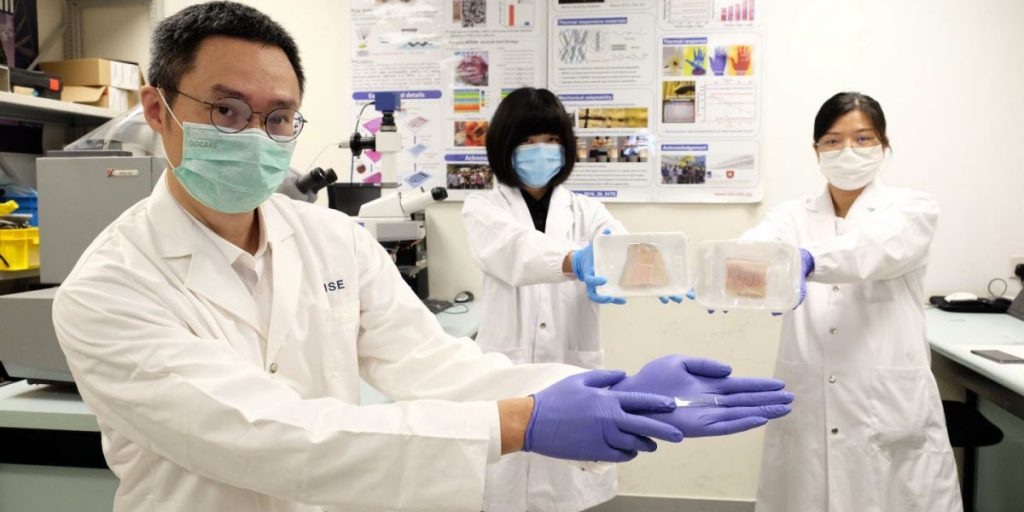E-Nose accurately detects if meat is fresh or spoiled
An NTU Singapore-led team of scientists have developed a new AI-powered electronic nose (e-nose) that can accurately measure the freshness of meat.
Led by NTU professor Chen Xiaodong, the team – which includes scientists Jiangnan University, China, and Monash University, Australia – believes their artificial olfactory system could help reduce food wastage by confirming to consumers whether the purchased meat is fit for consumption, much more accurately than a ‘Best Before’ label can.

The e-nose comprises of two elements: a colored ‘barcode’ that reacts with gases produced by decaying meat; and a barcode ‘reader’ in the form of a smartphone app that uses AI to interpret the combination of colors on the barcode.
According to Xiaodong, the e-nose can be easily integrated into packaging materials – like the underside of the PVC film that the meat is packaged in – and yields results within 30 seconds without the bulky wiring typically used for electrical signal collection.
The e-nose’s non-destructive, automated and real-time monitoring capability can also be used to recognise the types of gases that other types of perishable food emit as they become less fresh, providing a broadly applicable new platform for food quality control.
When tested on commercially packaged chicken, fish and beef meat samples that were left to age, the team found that their e-nose’s ‘deep convolutional neural network’ AI algorithm predicted the freshness of the meats with a 98.5% accuracy.
In comparison, the prediction accuracy of a commonly used algorithm to measure the response of sensors like the barcode used in this e-nose stood at 61.7%.
Just like how gases produced by decaying meat bind to receptors in the mammalian nose, the 20 bars in the e-nose’s barcode act as its receptors.
Each bar is made of chitosan embedded on a cellulose derivative and loaded with a different type of dye.
These dyes react with the gases emitted by decaying meat and change color in response to the different types and concentrations of gases.
The end result is a unique combination of colors (yellow to blue to red) that serves as a ‘scent fingerprint’ for the state of any meat.



